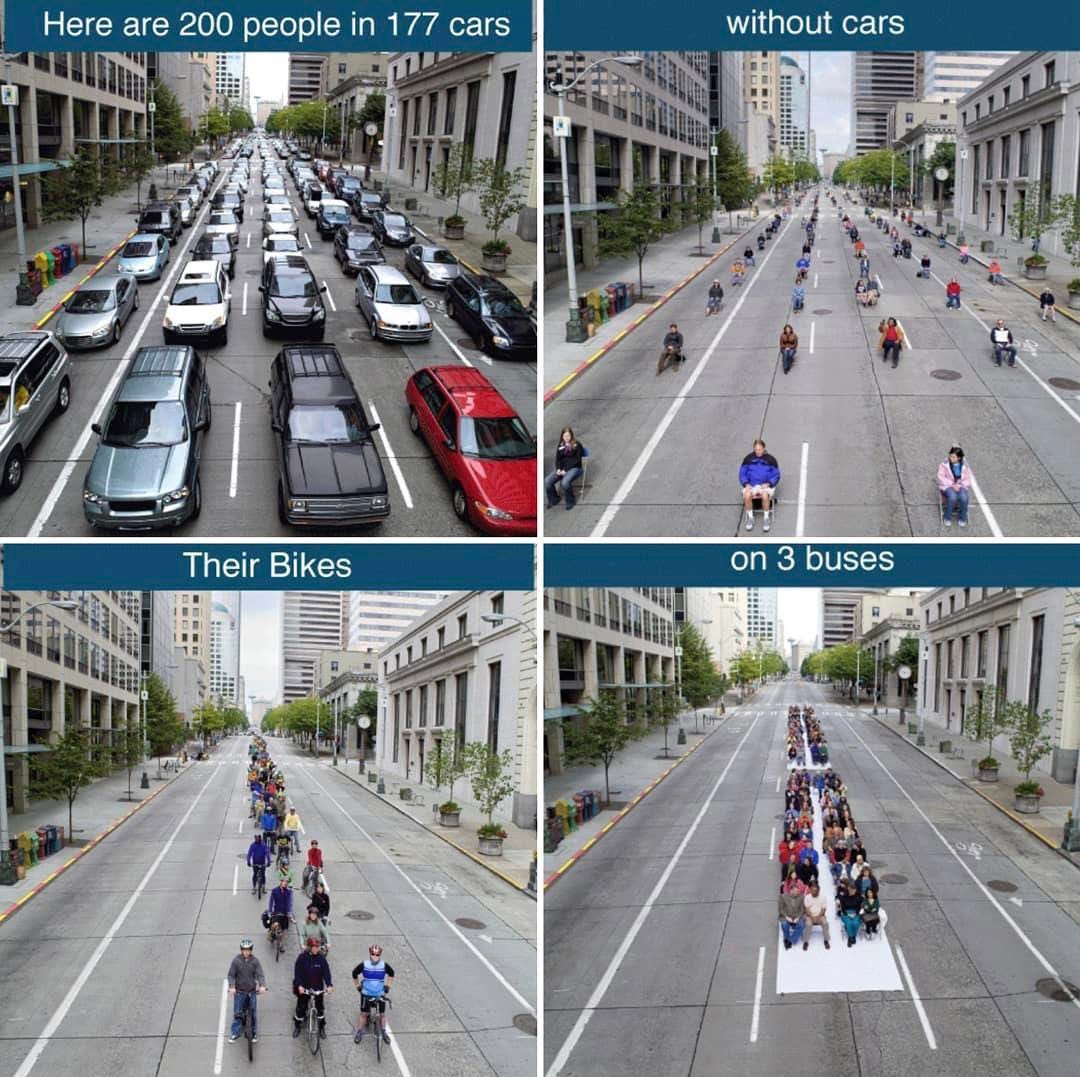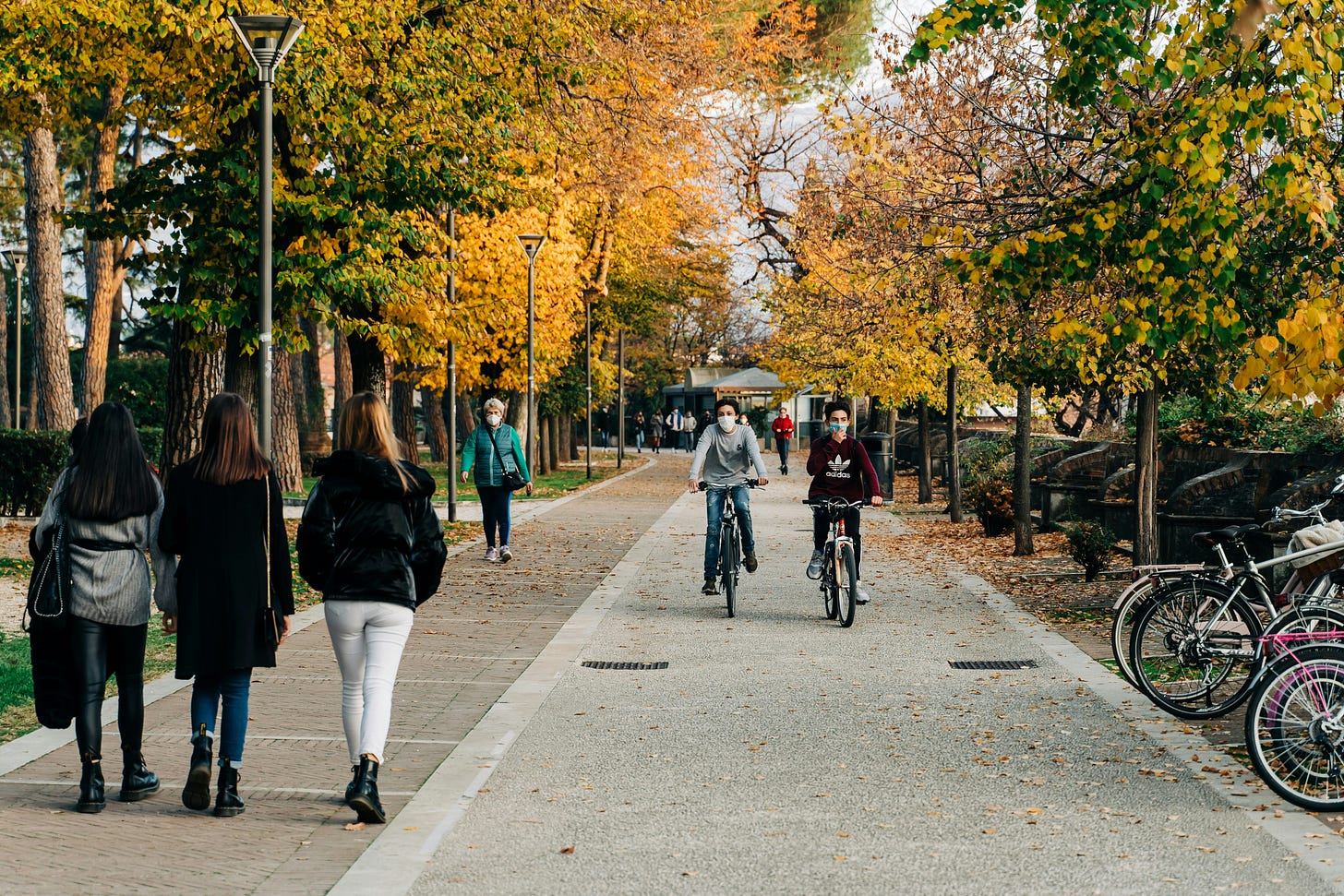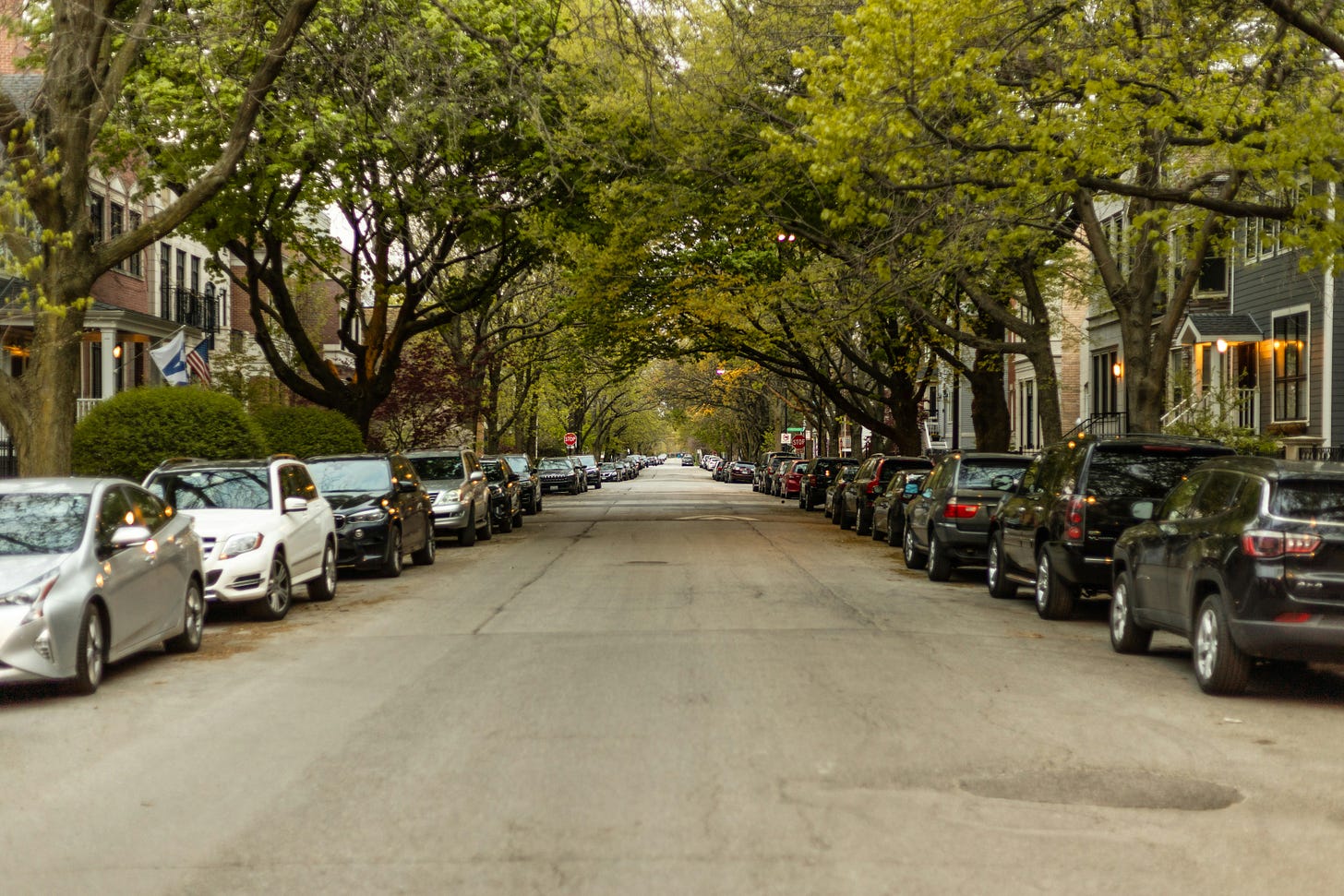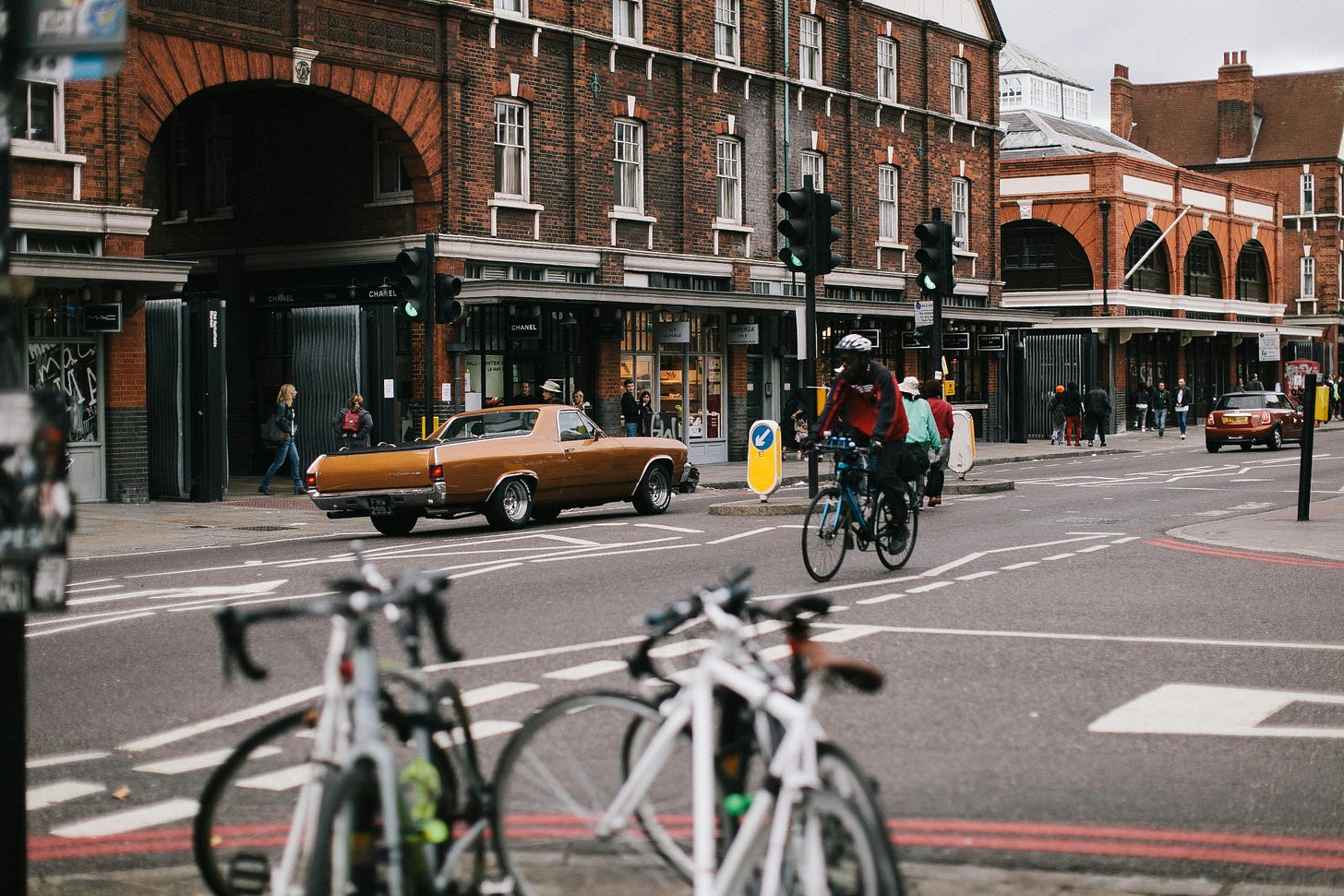Challenges in Scaling a Transportation Network
Growing communities should identify transportation methods that effectively scale up and acknowledge ones that don't
Hello and thank you for reading the Strong Towns Seacoast Newsletter. I was doing some research on population trends in this region and saw that this area has been experiencing lots of growth over the last decade. Unless something significant happens to change this, such as outlawing people to move into our communities, I think we should expect this trend to continue into the coming years. With this growth, there come a number of challenges, not the least of which is how to handle the increasing demand for our transportation network. As our cities and towns get denser, we can focus on transportation methods and development patterns that scale up effectively and help prevent congested roads that make getting around our communities unpleasant and exhausting.

Before we get into that, let’s give an update on our active project and details for our next in person meeting.
Downtown Dover Crosswalks
At the last Transportation Advisory Commission meeting in Dover we were listed as an agenda item to present our ideas to the city. We talked about our plans for extending the curb for two crosswalks in downtown Dover and also shared a video with the council members about daylighting the crosswalks in question. After the presentation the council members had a chance to ask questions and review our materials and then they voted unanimously to support our proposal and move forward with having a larger conversation with key members of the city. At the moment we are waiting for information on next steps, but we are excited to have such support for our proposal!
Meeting #9 Details
Saturday, May 18th 10:30AM - 12:00PM Dover Public Library Learning Center
We will be catching on on where we are for our current project, but I will be preparing a discussion topic as well. I’d like to start talking a bit more about productive land use and ways to measure it. We’ll be talking about value-per-acre and reviewing a land-use analysis of New Hampshire from Urban3.
Population Trends
I looked at the 2010 and 2020 US census results to get an idea of how some of the cities and towns in the area have been growing since then and these are the numbers:
Dover
2010: 29,987
2020: 32,741
Growth: 9.2%Durham
2010: 10,345
2020: 11,147
Growth: 7.8%Newmarket
2010: 5,297
2020: 5,797
Growth: 9.4%Portsmouth
2010: 20,779
2020: 21,956
Growth: 5.7%Rochester
2010: 29,752
2020: 32,492
Growth: 9.2%
Car-Centric Infrastructure is Expensive to Scale
When your town has only a few thousand people living in it, two-lane streets, a few stop signs, and some scattered parking are enough to allow everyone to navigate your transportation network with a car or truck. Private vehicle ownership feels convenient, and perhaps even necessary to navigate the rural parts of your town or to get to the town center where the battle for parking has yet to manifest. At this scale, it works for most people.
However, when you town grows to 10,000, 20,000, or more then the pain of traffic, congestion, paid parking, and the roar of constant vehicles along streets starts to grow with it. While parts of your town might still have their quiet character, the town center begins struggling to get people in and out of it effectively. This requires more public investment to keep things moving, so intersections are signalized, turning lanes are added, streets widened, and parking lots and garages are built. Also, don’t forget about the list of new streets that have been built for all of the developments that have been going on around town. More public and private land must be used to move and store all of these additional vehicles and it all requires additional investment to build and maintain.
For each of our residents, a car is almost essential to being a productive member of our communities. Think about what your schedule would look if you didn’t have a car for one week. What about a month? Do you think you could get to work or go to the grocery store if a car was not an option? For some of us yes, but for many of us it would be a challenge. In the cases of Dover and Rochester, we are asking our communities to accommodate large populations that are likely reliant on having a vehicle to use our transportation network. Each adult is paying for a vehicle (usually going into debt to do so), insurance, registration, fuel, vehicle maintenance, and every so often a toll or parking fee.
The reality is that car-centric infrastructure scales poorly and that as communities grow the cost increases for each member in both the private and public pocket books. As we grow we need to look for ways to accommodate density without imposing this expense on our community members. So, what would that look like? What types of transportation would scale more cost effectively?
Ways to Scale a Transportation Network
As our places grow in demand and become more dense we can actually direct our investments away from moving individual vehicles faster and towards moving people faster. Private vehicles are not the only option we have in our toolkit, and creating a transportation network that prioritizes the movement of people can help us identify strategic ways to invest public money.

Walking First then Biking
Compared to vehicles, walking and biking require significantly less public and private investment to transport the same number of people. Whereas vehicles have 30’ wide or sometimes even 70’ wide streets, bicycle and multi-use paths can be done in a 8’ or 12’. If we design our streets well enough so that vehicle traffic is slow (think 20 mph or slower), we don’t even have to make much more additional investment over a two-lane street because it would be safer to share some space. The more people can comfortably walk and bike around our communities, the less public and private investment is needed to build parking or widen streets.
Building Transit-Oriented Developments
We have access to some existing transit options (COAST and Wildcat Transit) that provide inter-city service which gives access to many places in the region. There is a concept called “transit-oriented development” that focuses on giving residents better access to transit and making transit stops comfortable to visit. Imagine that there was a new apartment building that was being developed in a walkable area with a bus stop near it. We might be tempted to figure out how to give new residents their own parking spot, but what if instead of investing in private parking spaces we invested in bus passes for half of them. That is an example of transit-oriented development, where we consider our existing transit investments as viable options for transportation.
Balancing Our Streets for Many Modes
None of this is to say that vehicles aren’t welcome, but as places become denser vehicles need to be balanced with other forms of higher density transportation. As our communities grow, unwanted congestion and lack of parking become more and more likely and while you might think that it just means we need more investment in making vehicles work for that population size, I hope that this article has at least got you thinking about other ways to scale up transportation in our communities that are cheaper for everyone.
Conclusion
The idea that vehicle congestion and traffic can be solved by adding more lanes or prioritizing vehicle speeds is an expensive solution that only temporarily eases those unwanted conditions. As long as a vehicle feels necessary to living comfortably in this region, then most driving age members of our communities will likely find themselves among an increasing number of vehicles demanding access to our limited infrastructure. A cheaper way to combat congestion is by giving people access to more viable options on how they transport themselves.
Thank you for reading, I hope to see you at our next meeting!





